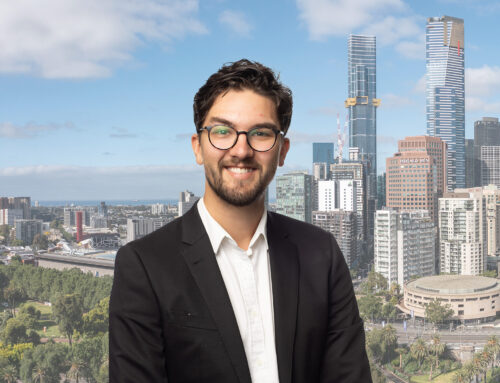4 March 2020
“NDY recognises its fundamental role in shaping our built environment and the need to lead by example, in particular for those locations within which we operate. Offsetting our residual emissions is one of several steps NDY is undertaking as part of its consolidated 2030 Environment and Social Governance (ESG) Strategy and commitments”
says Mark McKenna, NDY’s Director of the Global Sustainability Group.
As of March 2020, NDY offset its whole-of-business Scope 1 and 2 Greenhouse Gas (GHG) emissions for the 2019 financial reporting year. The business has also developed a strategy for refining our Scope 3 emissions by the 2020 calendar year end as part of an independently certified carbon neutral strategy.
Equal to our offsetting commitment is our drive to reduce GHG emissions in day-to-day operations, through environmentally conscious business practices. Our Safety, Health, Environment and Quality (SHEQ) and Sustainability Committees are already imbedding changes into our standards and processes, which include purchasing renewable energy across our sites, targeted energy efficiency improvements, sustainable transport planning, and deep cuts in waste generation. These efforts are key to the success of NDY’s 2030 ESG Strategy, planned for release in Q3 2020.
The investment in GHG offsets is a necessary part of any ESG strategy and NDY has made significant effort to ensure our approach is both meaningful and credible.
The recent Australian Bushfires in 2019 have further emphasised how the protection, management and restoration of natural ecosystems has a critical role to play in the future of our planet[i]. This year NDY has focused its offsetting efforts here, supporting the U.N Sustainable Development Goals (SDG’s) 13 ‘Climate Action’[ii] and 15 ‘Life on Land’[iii]. According to the Intergovernmental Panel for Climate Change (IPCC), a 1Bn ha. Increase in forest cover will be required by 2050 for the planet to limit global warming[iv].
NDY has worked with the following recognised partners across our operating regions to offset our emissions across four projects.
NDY has today also made a significant upfront investment in future biodiversity offsets to support expansion of these schemes. This combination of current and up-front investment in future offsets underpins our long-term commitment to the natural environment.
“NDY recognises that reducing GHG emissions is only one, albeit important, component of sustainable corporate governance. Our commitment to carbon neutrality, though, does represent a significant step forward for us in our sustainability journey”
says Stuart Fowler, CEO of NDY.
NDY has worked within the parameters of the GHG Protocol Corporate Standard to undertake a GHG emissions inventory. We have adopted an ‘operational control’ approach to identifying and quantifying our emissions profile.
The standard covers the accounting and reporting of seven greenhouse gases covered by the Kyoto Protocol. It was updated in 2015 with the Scope 2 Guidance, which allows companies to credibly measure and report emissions from purchased or acquired electricity, steam, heat, and cooling. Under the protocol a company’s GHG emissions are classified into three ‘scopes’. Scope 1 emissions are direct emissions from owned or controlled sources such as combustion [diesel and gas] and refrigerant use. Scope 2 emissions are indirect emissions from the generation of purchased energy. Scope 3 emissions are all indirect emissions (not included in scope 2) that occur in the value chain of the reporting company, including both upstream and downstream emissions[i]
Biodiversity and forestry loss are damaging our planet and harming efforts to curb climate change. That said, the value of investing in such offset schemes is complex and requires an in-depth appreciation of the key issues.The benefits of biodiversity offsets include utilising one of the most straightforward, effective means to combat climate change; and halting unsustainable land use and habitat loss.
There are however several pitfalls that, if not considered, may impact the integrity of investments. These include taking into account region-specific future political and climate changes, the robustness of measurement and overall management practices; and the relationship with prospective offsets productive land-use for fuel and food sources.
NDY has made reasonable effort to take these factors into account in developing its offset strategy. In Australia NDY is working with Carbon Neutral to invest in the Yarra Yarra Biodiversity Corridor Australian Native Bushland Reforestation project. The project is focused on reforestation of over 100,000 hectares of degraded farmland in Australia’s northern wheatbelt.
In Canada our offsets will assist in Darkwoods Forest Conservation project. Located in southeastern British Columbia, the Darkwoods property is bounded by the town of Creston in the south and Lake Kootenay in the east. This is a carbon sequestration project that achieves emissions reductions by preventing emissions otherwise caused by these logging activities. The project area connects a surrounding network of protected lands into one contiguous conservation area of over 100,000 hectares, preserving habitat for at-risk native wildlife.
On the South Island of New Zealand our contribution will go towards Reforesting and protecting 91ha of indigenous forest in Mōhua (Golden Bay), as part of the ‘Rameka Forest Carbon Project’. A community-based forest carbon project combined with public tracks for human-powered recreation. The revegetation of marginal farmland in native species is being done through a combination of active tree planting and passive regeneration – especially in the wetter gullies.
In Europe, NDY has invested in the Switzerland Mooreland Project. Despite a constitutional mandate, only a small part of moorland in Switzerland has been restored to date. It’s estimated that 0.74 million tCO2 escapes from well over 200,000 ha of drained moors each year. The project will rewet the moorlands by blocking drainage ditches and providing additional protection measures. The blockage construction method helps to raise water levels and prevent the degradation of organic material storing large amounts of carbon.
i. Science Journal [2019] The Global Tree Restoration Potential’ https://science.sciencemag.org/content/365/6448/76
ii. U.N Sustainable Development Goal 13 ‘Climate Action’ [2015]. Source: https://sustainabledevelopment.un.org/sdg13
iii. U.N Sustainable Development Goal 15 ‘Life on Land’ [2015]. Source: https://sustainabledevelopment.un.org/sdg151.pdf
iv. IPCC [2018] Forestry ARC4 Chapter 9. Source: https://www.ipcc.ch/site/assets/uploads/2018/02/ar4-wg3-chapter9-1.pdf









